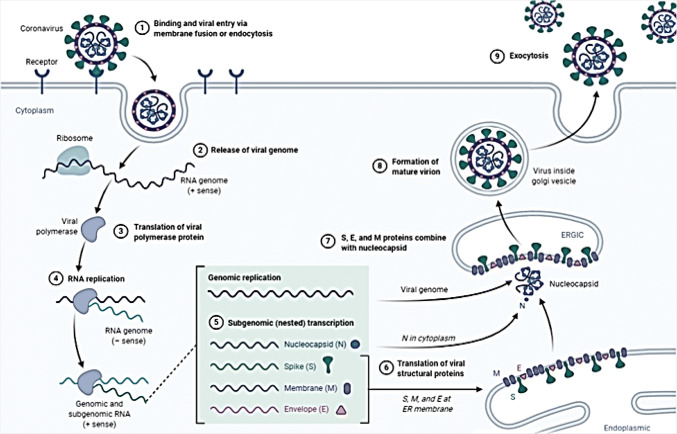Fig. 2.
Life cycle of CoV in host cells. Infection with CoV starts upon entry into the host cell via spike protein which attaches to cell membrane due to cell specific enzyme activation (1). After attachment, CoV via spike protein enters in host cell cytoplasm and releases their genome RNA (positive sense RNA) for the replication and transcription of mRNA (messenger RNA) (2). Viral genome (replicase genes) then translated into poly proteins pp1a and 1ab which later cleave and convert into small products for replication (3). In the next stage, viral RNA replicates to produce negative stranded RNA (sub genomic RNA) for the synthesis of genomic positive sense RNA through discontinuous transcription (4–5). Genomic RNA and N protein assembled into nucleocapsids followed by budding in the intercellular membrane of the endoplasmic reticulum (ER), Golgi intermediate compartment (6–7–8). Once they complete their life cycle, viruses are then ready to exit from the cell through exocytosis for transmission (9).

